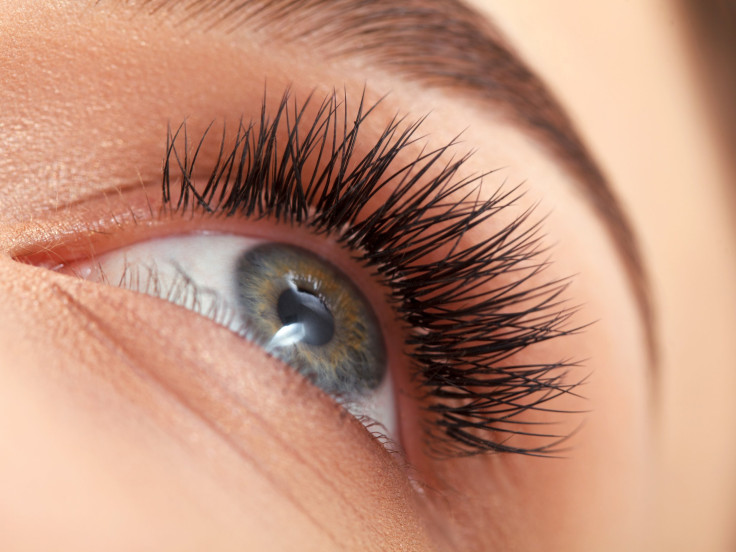Winter Weather And Wind Chills: Why We Cry When It's Cold, And The Optimal Eyelash Length To Avoid It

Talk to just about anyone in the Northeast about how their February went and there’s a good chance that at some point they’ll lament about the weather. There’s been ice on the streets for weeks, it’s snowed at least twice unexpectedly (because hey, if we’re going to be subjected to this, why check?), and it’s been brutally cold, with wind chills making it feel lower than zero degrees. If you’ve ever been hit by a cold wind, there’s a good chance it’s made you cry. But whether it’s a lot of tears or only a little, it might have more to do with the length of your eyelashes, according to a new study.
After visiting New York City’s American Museum of Natural History and inspecting the vast array of animal hides on exhibit, and later building a wind tunnel at Georgia Institute of Technology, lead author of the study Guillermo Amador discovered that 22 species of mammals have evolved to have eyelashes one-third the width of their eye. This specific length, Amador says in a press release, is optimal for forming a “barrier to control airflow and the rate of evaporation on the surface of the cornea.”
“When eyelashes are shorter than the one-third ratio, they have only a slight effect on the flow. Their effect is more pronounced as they lengthen up until one-third. After that, they start funneling air and dust particles into the eye.”
Our eyes are constantly producing tears. Every time we blink, tears spread across the surface of the eye, moistening it and clearing out miniscule dust particles. Those tears then drain into the lacrimal canals, where they’re funneled into the nasal cavity — which explains why we suddenly get runny noses in the cold. But when it’s cold and windy at the same time, the cold dry air causes this tear film to evaporate faster, Amador said, thus forcing the eyes to produce more tears.
“Following our study, eyelashes will help minimize the amount of air reaching the eye surface, so if someone doesn’t have eyelashes or has very long eyelashes, they will experience more discomfort and their eyes will produce even more tears,” Amador told Medical Daily in an email. “I think eyelashes help to reduce the amount of fluid our eyes have to produce to keep our eyes moist.”
For the study, the researchers first examined the eyes and eyelashes of 22 mammalian species at the museum, including hedgehogs and giraffes. Then, they built a wind tunnel to recreate airflow on an imitation human eye, made of a 4-millimeter deep, 20-millimeter diameter aluminum dish serving as the cornea; an acrylic plate to mimic a face, and mesh to replicate eyelashes. Their intention was to see how varying the length of the mesh would affect airflow on the cornea.
“As short lashes grew longer, they reduced airflow, creating a layer of slow-moving air above the cornea,” said lead author David Hu, an assistant professor at the university, in the press release. “This kept the eye moist for a longer time and kept particles away. The majority of air essentially hit the eyelashes and rolled away from the eye.” Once they went over the one-third ratio, however, they channeled the air directly to the eye.
The researchers said the findings could help people considering fake eyelashes, as they may affect eye health if they’re too long. Other uses could include everything from eyelash-inspired filaments to protect solar panels, photographic sensors, or robots in dusty environments. Or, we could just use the findings as a confirmation of why some people cry more than others when it’s cold and windy.
Source: Amador G, Mao W, DeMercurio, et al. Eyelashes divert airflow to protect the eye. Journal of the Royal Society Interface. 2015.
Published by Medicaldaily.com



























